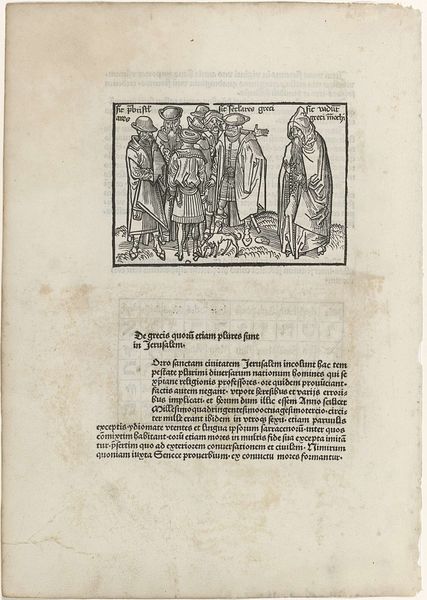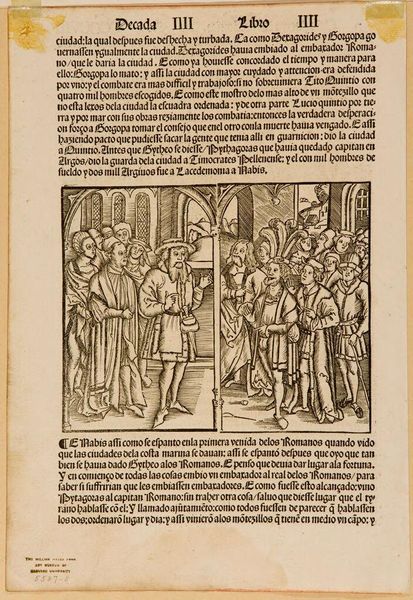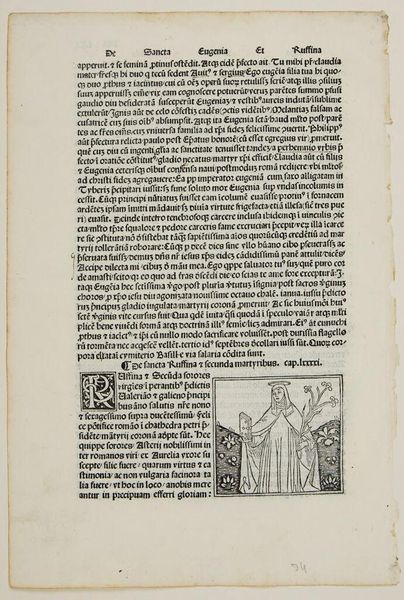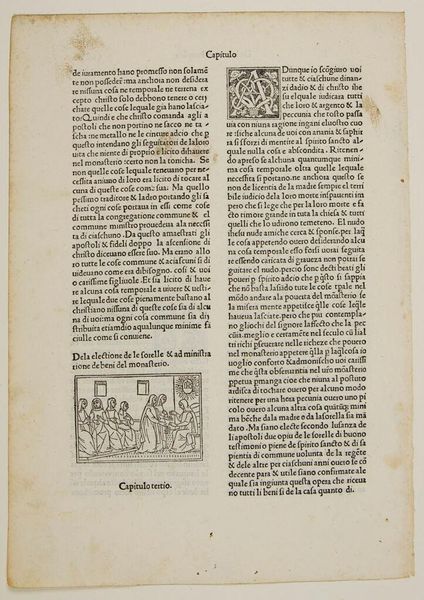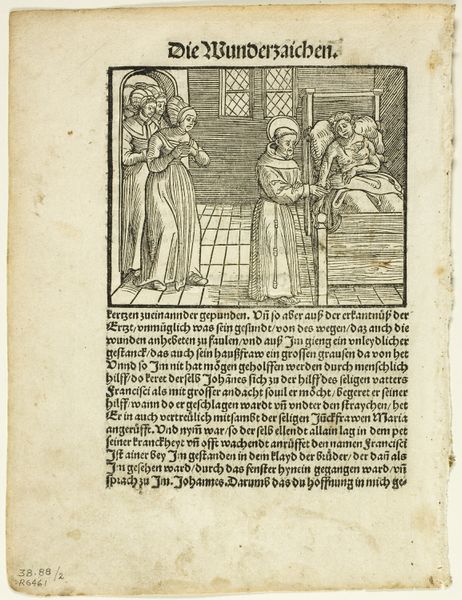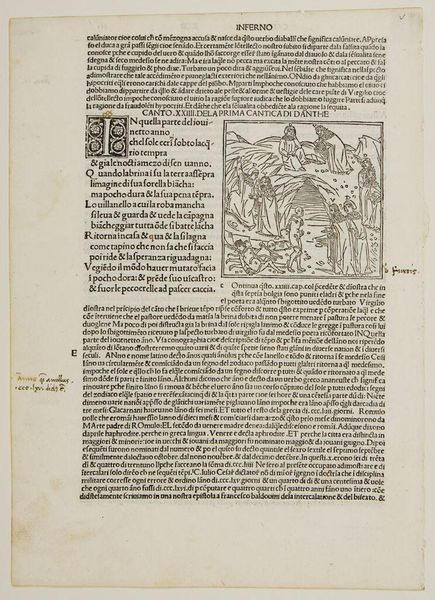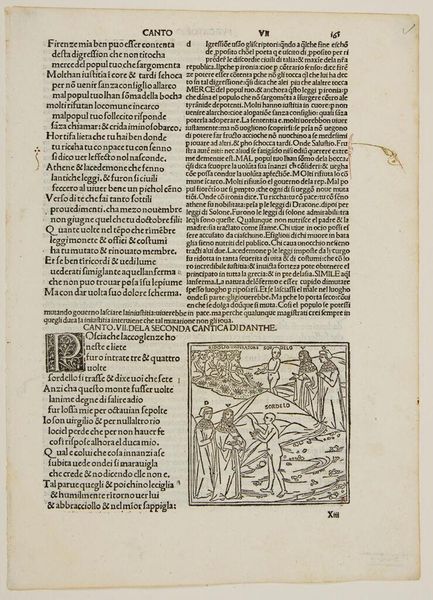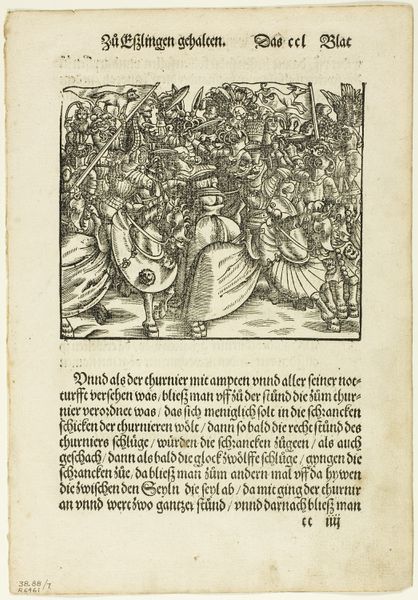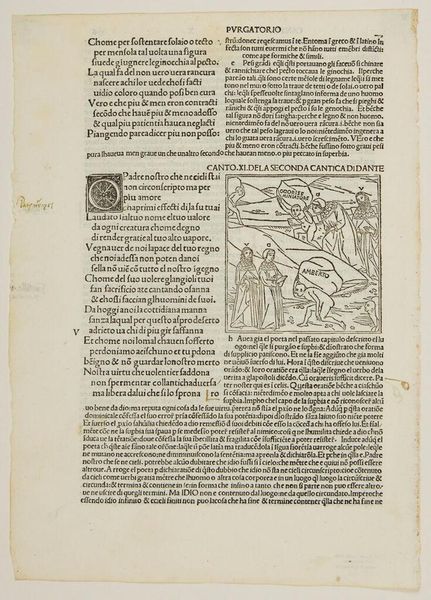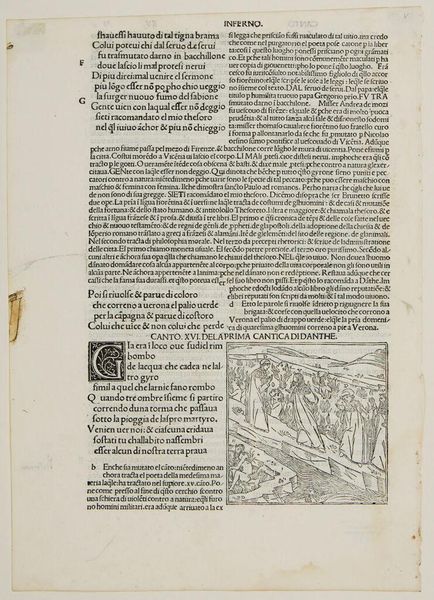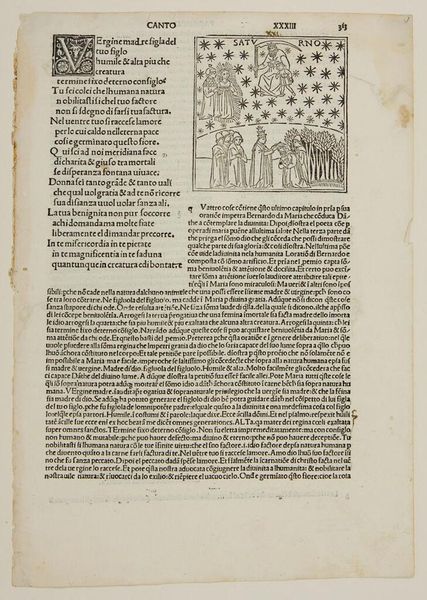
Poliphilus Meeting the Venerable Matron (recto) and Poliphilus in a Rocky Place (verso) from Hypnerotomachia Poliphili (The Strife of Love in a Dream) Plate 54 from Woodcuts from Books of the 15th Century c. 1499 - 1929
0:00
0:00
drawing, print, paper, woodcut
#
drawing
#
narrative-art
# print
#
paper
#
11_renaissance
#
woodcut
#
italian-renaissance
#
italy
Dimensions: 104 × 130 mm (image, recto); 172 × 128 mm (image, verso); 293 × 192 mm (sheet)
Copyright: Public Domain
Editor: This is a striking woodcut print titled "Poliphilus Meeting the Venerable Matron," dating back to around 1499 and reprinted in 1929. It's currently housed at The Art Institute of Chicago. I’m immediately struck by the crisp lines and the stark contrast. It gives the scene a really otherworldly feeling, almost like a dream. What do you make of this piece? Curator: Ah, yes! This is an illustration from the *Hypnerotomachia Poliphili*, a Renaissance book shrouded in mystery and celebrated for its gorgeous, bizarre imagery. Look closer – see how the artist renders depth using only line? The figures seem to exist in their own little drama. Notice, for example, the architectural motifs: Do they look Roman, Greek, or like some entirely invented ancient world? Editor: Hmm, I see what you mean! There's definitely a classical influence, but with this strange dreamlike quality layered on top. It's like a half-remembered memory of antiquity. Curator: Precisely! It speaks to the Renaissance fascination with the past, but also its desire to build something entirely new from those ruins. Consider the *Hypnerotomachia*'s author—likely a Venetian priest—as an artist constructing his *own* version of an ancient utopia, with anxieties and desires all its own. Does the Venerable Matron seem welcoming, or imposing? Editor: Imposing, definitely! Her stance and the gestures of the women behind her… they feel almost like a barrier. And the rocky landscape on the other side adds to that feeling of… resistance, maybe? Curator: An astute observation. Perhaps this illustrates that the path to love, as Poliphilus discovers in the book, isn't straightforward. It demands patience and requires him to overcome obstacles both internal and external. In the end, a dialogue like this helps illuminate the interplay between the author's intent and a viewer's individual perception, doesn’t it? Editor: Absolutely! I hadn't considered the layers of interpretation until now, especially within the Renaissance context.
Comments
No comments
Be the first to comment and join the conversation on the ultimate creative platform.
